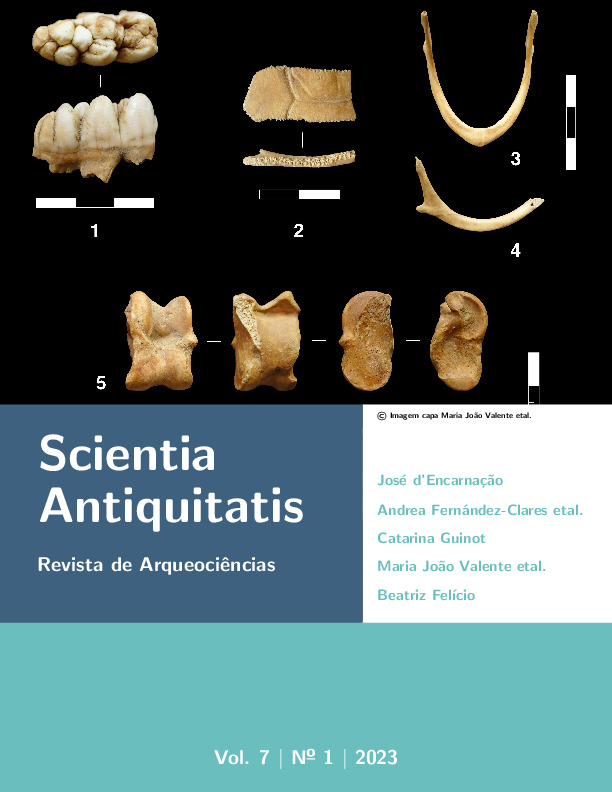Contributo para o conhecimento da alimentação eborense em contextos modernos
estudo dos materiais zooarqueológicos do Colégio do Espírito Santo
Keywords:
Zooarchaeology, Diet, Modern/Contemporary Age, Colégio do Espírito Santo, ÉvoraAbstract
This work presents the archaeofaunal assemblage collected during the excavation of a trench for the installation of a large crane to support conservation and restoration work on the roofs of the College of the Holy Spirit, the main building of the University of Évora.
The excavated area was small and limited to a depth required for the construction (1 m). As a result, the observed surroundings are, in some instances, a consequence of recent construction activities, while in others, they were clearly defined and separated by multiple pavement levels. The overall findings show the presence of a set of faunas associated with the daily life of Évora, mostly resulting from the disposal of food remains, dated between the 16th and 19th centuries.
The studied collection, consisting of 285 identified remains, is relatively homogeneous, although there is some variability in the relative abundance of the main animal species. Mammals, birds, reptiles (turtle), fish, and mollusks were identified. The majority of the remains belong to domesticated mammals of medium and large size, with goats (especially sheep), cattle, and pigs being the most abundant in that order. Additionally, there are horses, rabbits, hares, and various carnivores (dogs, cats, foxes, and weasels). Among birds, chickens predominate, followed by ducks and partridges. Mollusks are represented by clams, oysters, scallops, and Acanthocardia.
Most mammals and birds were slaughtered at a sub-adult and/or adult age, with evidence suggesting processing for stews or other boiled meals.


